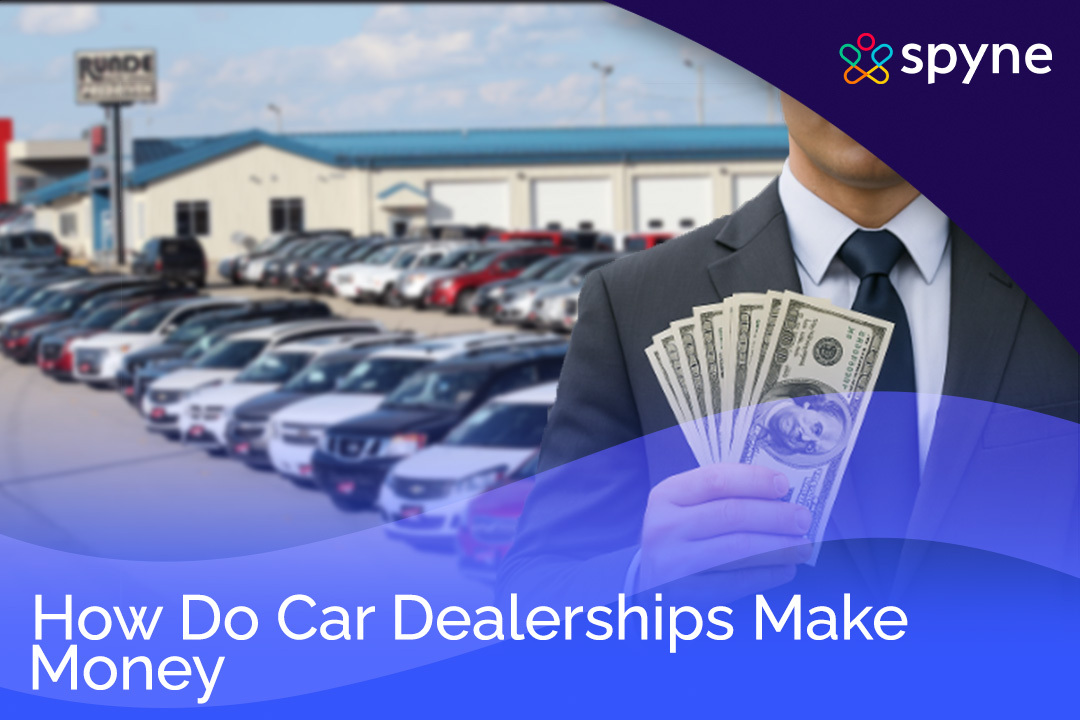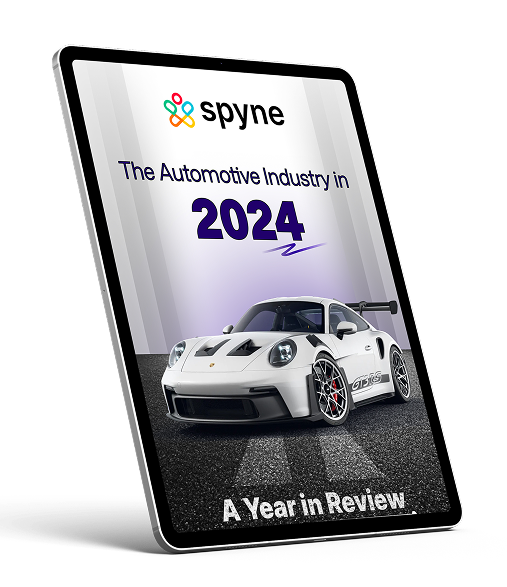Have you ever wondered how do car dealerships make money? It’s more than just buying low cars and selling them at high rates. Car buyers know that understanding a dealership’s revenue prevents them from falling for their salesman tactics. Dealerships operate within a complex ecosystem, and while selling vehicles is a core component, profits often come from various sources.
While used car sales might yield a 10% profit, the real money lies beyond the price. Dealerships boost their bottom line through financing, extended warranties, service packages, paint and fabric, and the strategic handling of trade-ins. This blog will dive deep into the multifaceted business model of used car dealerships. We will explain how do car dealerships make money. We will walk you through the intricacies of vehicle acquisition, reconditioning, and after-sale services, giving you the insider knowledge you need.
How Do Car Dealerships Make Money?
Car dealerships operate a sophisticated business model with several revenue sources to keep themselves profitable. Following is a comprehensive description of how much money do car dealerships make a year;
Main Sources of Revenue
Understanding these key areas is crucial to grasping the financial workings of a car dealership.
- Vehicle Sales and Markups
Used Cars: Used cars are usually acquired from auctions, trade-ins, or direct purchases from owners. Used cars are then sold at a profit, mostly after repairing them into a working state. The profit margin is somewhere around 10%. It fluctuates based on the used car market trends and the cars’ conditions.
Example: A dealer purchases a used vehicle for $6,000, sells it for $8,500, and makes a profit of $2,500.
New Vehicles: The dealership purchases new vehicles from manufacturers. They retail the vehicles to you at or close to the manufacturer’s recommended retail price. The dealership makes its profit from the spread between the selling price and the wholesale price. New vehicle profit margins are relatively low, ranging from about 3% to 5%.
Example: If a dealer purchases a new vehicle from a manufacturer for $20,000 and sells it to you for $22,000, they earn a profit of $2,000.
- Financing
Do you know how do car dealerships make money on financing? Dealers assist customers by brokering car loans, serving as the go-between between you and the lender, and then marking up the interest rate, keeping the difference as profit for themselves.
Example: If a customer is quoted 3%, but the dealership makes 5% on a $20,000 loan, the dealership gains an additional $400 in profit.
- Certifications and Warranties
Dealership profitability increases when they sell you certified pre-owned cars and extended warranties. These extras provide you with further peace of mind and enable the dealership to make more from the car.
Example: A CPO sticker could allow a dealership to charge an additional $2,000 on a car, and an extended warranty could add $2,500.
Secondary Revenue Streams
These additional income streams, while sometimes less obvious to the buyer, play a significant role in a dealership’s overall financial health.
- Service and Maintenance
Dealerships have service centres that will charge you more than independent auto repair shops for maintenance and repairs. This includes regular services, such as oil changes and other repairs.
Example: A dealership may charge $70 for an oil change versus $30 in an independent store, netting an additional $40 for the dealership
- Parts and Accessories
Although profit is low on auto parts due to competition from retailers selling the same at a lesser price over the Internet, the dealership continues to sell replacement parts and accessories.
Example: Custom wheels or stereos may have higher profit margins sold by the dealership.
- Trade-ins
Dealerships make money by buying trade-ins, meaning buying the cars from the sellers at lower prices and reselling the same car at higher prices. They often offer less than the vehicle’s market value to ensure a profit margin by using car dealership marketing strategies.
Example: If a dealership buys a trade-in for $4,000 and sells it for $6,500, they make a $2,500 profit.
- Insurance and Add-ons
Dealerships also offer other insurance-related products, such as extended warranties, gap insurance, and protection plans. These usually are over-priced but highly profitable for the dealership.
Example: An extended warranty may cost the dealership $1,000 but be sold to the customer at $2,500.
- Commissions
The car sales commission is earned by salesmen working for the car dealership, contributing to the dealership’s total revenues.
Example: On the sale of a car worth $20,000, the salesperson may earn anywhere from $500 to $1,000 in commission.
Additional Strategies
Strategic use of these tactics allows dealerships to remain competitive and profitable in the automotive market
- Incentives
Dealerships provide incentives such as cash rebates or low-interest financing to boost sales. Though they are advantageous to you, they also enable dealerships to preserve or raise their profit margins by drawing more buyers like you.
Example: A dealership provides a free oil change with the sale of a car, which promotes sales without reducing profit considerably.
- Sales Volume
Dealerships sell large quantities of cars to achieve their total profits, even though individual car profit margins are small.
Example: Selling 100 cars with a $1,000 profit each makes $100,000 total profit.
- Used Car Auctions
Dealerships usually purchase cars at auctions to resell them at higher prices. This involves strategic bidding to make a profit margin.
Example: Purchasing a car at auction for $3,000 and selling it for $5,000 has a $2,000 profit.
How can Spyne Help Car Dealerships Make Money?
Spyne provides used car sourcing, AI-powered merchandising, building your dealership website, publishing dealers’ inventory on social media, personal dealership websites, and marketplaces, and offers automotive CRM for lead generation and management for used car business setup. Therefore, Spyne’s AI-powered solutions result in faster turnaround times and increased sales. Furthermore, Spyne resolves dealers’ biggest problem: “How do car dealerships make money?” Therefore, check out the top AI solutions Spyne offers that will boost your dealership sales and leads.
1. Sourcing Used Cars with Automotive Inventory Management
Spyne’s automotive inventory management guides the dealerships to source used cars from trending marketplaces, helping them to stock high-demand vehicles. This process upgrades the inventory, allowing dealerships to carry the market’s best and actively reach a wide range of high-value buyers.
Here’s how it works: Spyne’s inventory car lot management examines the market value of vehicles. This examination sends dealerships live updates on car popularity increases, helping them to update their inventory accordingly.
2. Online Visibility: Publish Your Inventory with AI-Powered Merchandising
Spyne’s car dealer website building tools let the dealership build a website that does more than just list cars. Dealerships can make those cars look good with generated pictures and descriptions and give your website a cool look that shows off your brand. Dealerships can even change the website on the phone, adding or removing pages whenever they want.
Here’s how it works: Spyne’s tech keeps the car listings organized and easy to find. Dealership customers will see a clean, simple website where all the car details are clear and easy to understand.
3. AI-powered CRM and Lead Management System
Spyne’s system connects with the dealership customer database and makes it super easy to manage. It grabs all the customers’ info from everywhere, cleans it up, and puts it all in one place. This lets the dealership use smart computer programs to sell more cars. Dealers can automatically send out messages to follow up with customers and can target the ads to people who need specific things.
Here’s how it works: Spyne keeps the customer info organized and simple with the help of automotive CRM. They can send out special ads to each customer based on what they want. Spyne also watches how well your car ads are doing on different websites and also tells you where changes are needed to make changes.
Conclusion
Auto dealership entrepreneurs have this big question: “How do car dealerships make money?” So, the answer to this is that dealerships generate profit from multifaceted revenue streams aside from the sale of cars: finance, warranties, and services. Intelligent technology such as Spyne maximizes inventory, websites, and CRM for higher sales. Awareness of such strategies enables customers and makes dealerships successful in a competitive industry. Through the introduction of data-based AI automation, dealerships can improve customer experience and increase profitability.




























